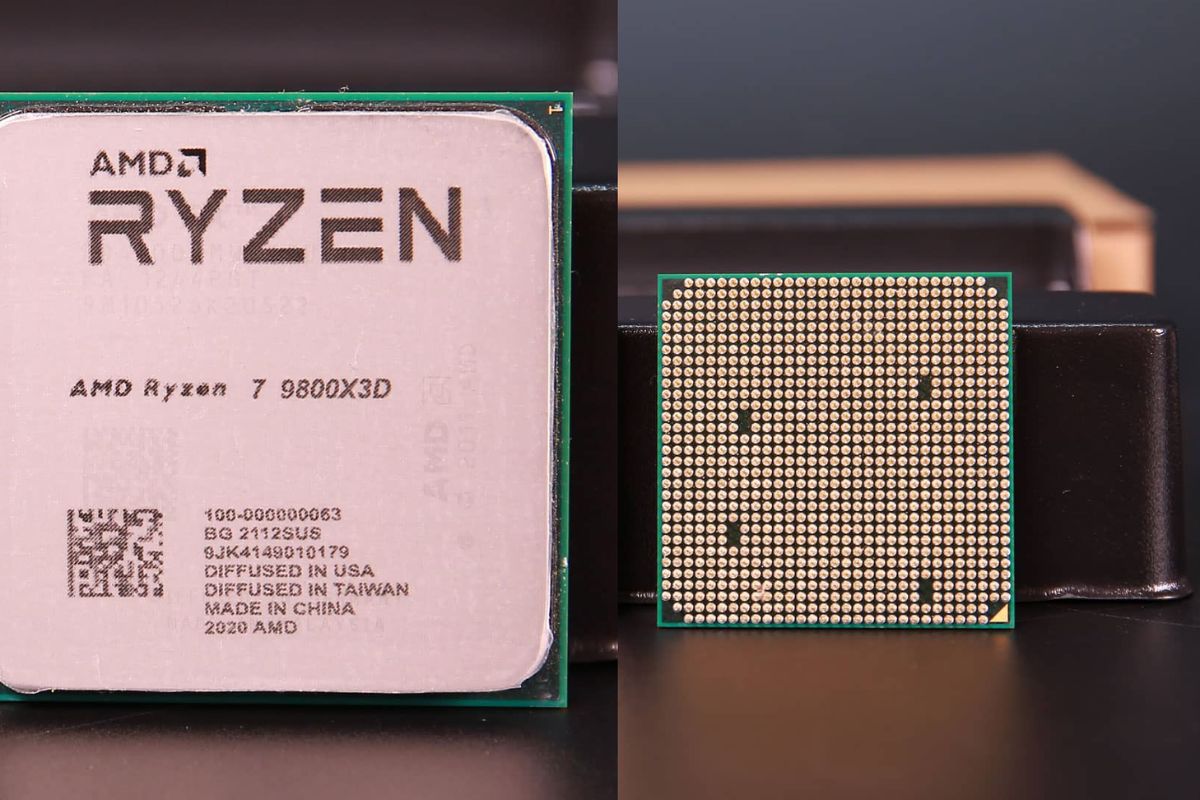Hello friends, Today I want to share something very important that every PC builder or buyer should be aware of — a recent case where a user received a fake AMD Ryzen 7 9800X3D processor. Yes, you read that right. A fake CPU, which looked almost real on the outside, turned out to be a completely non-functional dummy on the inside. This discovery was made public after Gamers Nexus delidded the chip and exposed the truth.
If you’re someone who buys computer parts online, especially from marketplaces, this article is for you. I’ll walk you through the whole incident, what signs to look for, and how to avoid falling for such scams. Let’s dive in.
What Happened?
| Detail | Description |
|---|---|
| Product Involved | AMD Ryzen 7 9800X3D |
| Issue | Fake CPU with no chiplets or I/O die |
| Discovered By | Gamers Nexus (YouTube tech channel) |
| Where It Was Purchased | Amazon |
| How It Was Identified | Delidding and visual inspection |
| Major Finding | The processor had no CCDs or I/O die — only a dummy substrate |
The User’s Concern
The story started when a user purchased an AMD Ryzen 7 9800X3D from Amazon. After facing issues, they sent the chip to Gamers Nexus, a reliable tech channel known for deep hardware analysis. From the outside, the processor looked almost identical to a real one. But once GN took a closer look, the differences became clear.
Delidding the Fake Ryzen 7 9800X3D
To uncover what’s under the hood, Steve from Gamers Nexus decided to delid the processor — that means he removed the IHS (Integrated Heat Spreader), which covers the actual silicon components.
-
The IHS was heated to 160°C, then removed using floss and careful handling.
-
What was underneath shocked everyone — no CCDs, no I/O die.
-
The substrate (the green PCB base) was completely empty.
This was not a broken chip. It was a dummy CPU, designed to look real from the outside, but never function.
How to Spot the Fake Ryzen 7 9800X3D
Even before delidding, there were some hints that this wasn’t a genuine product. Here are the differences that GN highlighted:
| Component | Fake CPU | Real CPU |
|---|---|---|
| IHS Writing | Off-color, incorrect font | Crisp and clear markings |
| Substrate Color | Slightly off-green | AMD standard color |
| Cutouts | Larger than normal | Small, symmetrical |
| Capacitors | Wrong layout and count | Matches original spec |
| SMD Components | Matched Ryzen 5 7600 | Matches 9800X3D layout |
| Serial Numbers | Didn’t match packaging | Should match exactly |
The most obvious sign was that the serial number on the fake chip didn’t match the number on the box. Also, when seen from the side, the fake IHS was slightly protruding, a trick to make it look filled inside.
Why Fake CPUs Are a Problem
Fake CPUs are not new, but they’re usually very low-tech — some scams re-label old chips to look like newer ones. However, this one was more dangerous because it was an entirely dummy unit, with no chance of working at all.
Here’s why this matters:
-
You lose money, as these chips won’t work.
-
They may pass through initial checks, especially if you don’t install them right away.
-
Returns can be difficult, especially from third-party sellers or international orders.
Tips to Avoid Getting Scammed
If you’re buying a new processor, follow these steps to protect yourself:
-
Buy from verified retailers – Always choose official brand stores or trusted sellers on sites like Amazon or Newegg.
-
Avoid used or “open-box” CPUs unless from a trusted seller.
-
Match the serial numbers on the box and the CPU.
-
Compare with real product images on AMD’s official site.
-
Inspect before installation – Check fonts, substrate color, capacitor placement.
-
Document unboxing – Take a video or photos when unboxing expensive parts.
Final Words
The case of the fake AMD Ryzen 7 9800X3D shows that scammers are getting smarter. This particular unit even mimicked physical characteristics well enough to fool casual inspection. However, thanks to detailed teardown and delidding by Gamers Nexus, the truth came out.
Always be cautious when buying high-end hardware. While incidents like this are still very rare, it’s better to stay informed and vigilant. If you suspect something’s wrong with your CPU, don’t hesitate to reach out to the seller or tech channels that help expose these frauds.



